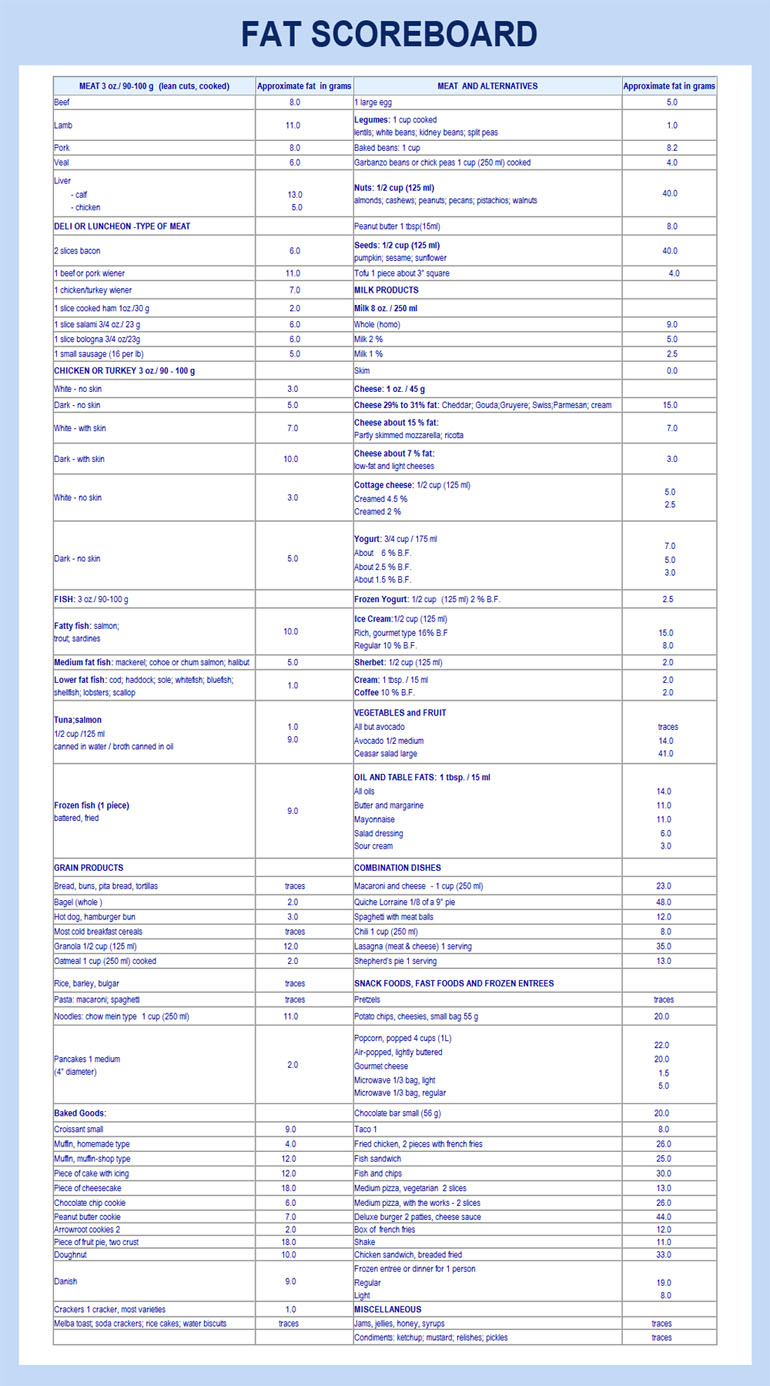Health Pages
Fat Scoreboard
Fat Scoreboard
This Fat Scoreboard lists the approximate fat content of some common foods. You can also learn about the fat content of various foods from the nutrition labels on some food packages. Use these fat facts to compare products, choose lower-fat foods more often and to track how much fat you are eating each day.
MEAT, FISH, POULTRY AND MEAT ALTERNATIVES
Note: There is no easy way to describe what 3 ounces, or 90 - 100 grams of meat, poultry or fish looks like. It's a small amount, probably much smaller that you are used to eating. As rough guide, the following examples will give you an idea of what 3 ounces looks like:
- 1 chicken breast (whole chicken has 2 breast portions)
- 1 loin pork chop or 2 loin lamb chops
- 1 piece of meat about the size and thickness of a cooked, quarter-pound hamburger
- 1 fillet of fish about the length of your outstretched hand and as wide as your three middle fingers
RomWell Health Pages - Disclaimer
Our pages are created to provide medically accurate information that is intended to complement, not replace or substitute in any way the services of your physician. Any application of the recommendations set forth in the following pages is at the reader's discretion and sole risk. Before undergoing medical treatment, you should consult with your doctor, who can best assess your individual needs, symptoms and treatment.Cholesterol Risk Factors
The health history of your parents and grandparents is the main factor in determining your blood cholesterol levels. A history of high blood cholesterol in your family means that you may be more at risk for heart disease. If high blood cholesterol runs in your family, let your doctor know.
High blood cholesterol levels may also be caused by diseases such as diabetes as well as thyroid, kidney or liver disease.
The risk of heart disease increases as you grow older, with men more at risk than pre-menopausal women. However, heart disease and stroke are not just men's diseases - they are the number one cause of premature death in women.
High blood cholesterol levels are a heart health concern, particularly if you smoke. Smoking tends to decrease your HDL "good" cholesterol levels and increases the rate at which fatty deposits form on artery walls.
An active lifestyle helps your heart, lungs and blood vessels work better and can help you maintain a healthy weight. Regular physical activity helps increase your HDL "good" cholesterol levels.
Having a healthy weight can help you control your blood cholesterol and prevent high blood pressure. Reducing excess body weight cuts the strain put on your heart and may increase your HDL "good" cholesterol levels.
High blood cholesterol levels can be caused by diets which are high in fat, particularly saturated fat. An eating pattern that is lower in fat and higher in fibre can help you control your cholesterol levels and reduce your heart disease risks.


